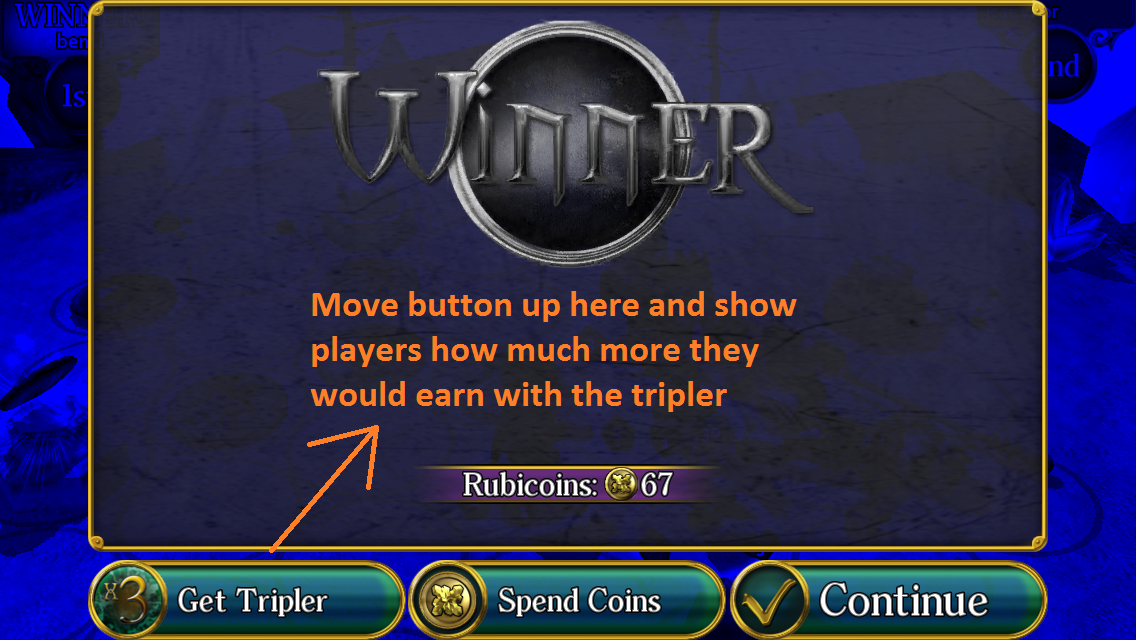- Adf.ly: Adf.ly is the oldest and one of the most trusted URL Shortener Service for making money by shrinking your links. Adf.ly provides you an opportunity to earn up to $5 per 1000 views. However, the earnings depend upon the demographics of users who go on to click the shortened link by Adf.ly.
It offers a very comprehensive reporting system for tracking the performance of your each shortened URL. The minimum payout is kept low, and it is $5. It pays on 10th of every month. You can receive your earnings via PayPal, Payza, or AlertPay. Adf.ly also runs a referral program wherein you can earn a flat 20% commission for each referral for a lifetime. - Clk.sh: Clk.sh is a newly launched trusted link shortener network, it is a sister site of shrinkearn.com. I like ClkSh because it accepts multiple views from same visitors. If any one searching for Top and best url shortener service then i recommend this url shortener to our users. Clk.sh accepts advertisers and publishers from all over the world. It offers an opportunity to all its publishers to earn money and advertisers will get their targeted audience for cheapest rate. While writing ClkSh was offering up to $8 per 1000 visits and its minimum cpm rate is $1.4. Like Shrinkearn, Shorte.st url shorteners Clk.sh also offers some best features to all its users, including Good customer support, multiple views counting, decent cpm rates, good referral rate, multiple tools, quick payments etc. ClkSh offers 30% referral commission to its publishers. It uses 6 payment methods to all its users.
- Payout for 1000 Views: Upto $8
- Minimum Withdrawal: $5
- Referral Commission: 30%
- Payment Methods: PayPal, Payza, Skrill etc.
- Payment Time: Daily
- CPMlink: CPMlink is one of the most legit URL shortener sites.You can sign up for free.It works like other shortener sites.You just have to shorten your link and paste that link into the internet.When someone will click on your link.
You will get some amount of that click.It pays around $5 for every 1000 views.They offer 10% commission as the referral program.You can withdraw your amount when it reaches $5.The payment is then sent to your PayPal, Payza or Skrill account daily after requesting it.- The payout for 1000 views-$5
- Minimum payout-$5
- Referral commission-10%
- Payment methods-Paypal, Payza, and Skrill
- Payment time-daily
- Ouo.io: Ouo.io is one of the fastest growing URL Shortener Service. Its pretty domain name is helpful in generating more clicks than other URL Shortener Services, and so you get a good opportunity for earning more money out of your shortened link. Ouo.io comes with several advanced features as well as customization options.
With Ouo.io you can earn up to $8 per 1000 views. It also counts multiple views from same IP or person. With Ouo.io is becomes easy to earn money using its URL Shortener Service. The minimum payout is $5. Your earnings are automatically credited to your PayPal or Payoneer account on 1st or 15th of the month.- Payout for every 1000 views-$5
- Minimum payout-$5
- Referral commission-20%
- Payout time-1st and 15th date of the month
- Payout options-PayPal and Payza
- Wi.cr: Wi.cr is also one of the 30 highest paying URL sites.You can earn through shortening links.When someone will click on your link.You will be paid.They offer $7 for 1000 views.Minimum payout is $5.
You can earn through its referral program.When someone will open the account through your link you will get 10% commission.Payment option is PayPal.- Payout for 1000 views-$7
- Minimum payout-$5
- Referral commission-10%
- Payout method-Paypal
- Payout time-daily
- Linkbucks: Linkbucks is another best and one of the most popular sites for shortening URLs and earning money. It boasts of high Google Page Rank as well as very high Alexa rankings. Linkbucks is paying $0.5 to $7 per 1000 views, and it depends on country to country.
The minimum payout is $10, and payment method is PayPal. It also provides the opportunity of referral earnings wherein you can earn 20% commission for a lifetime. Linkbucks runs advertising programs as well.- The payout for 1000 views-$3-9
- Minimum payout-$10
- Referral commission-20%
- Payment options-PayPal,Payza,and Payoneer
- Payment-on the daily basis
- Short.am: Short.am provides a big opportunity for earning money by shortening links. It is a rapidly growing URL Shortening Service. You simply need to sign up and start shrinking links. You can share the shortened links across the web, on your webpage, Twitter, Facebook, and more. Short.am provides detailed statistics and easy-to-use API.
It even provides add-ons and plugins so that you can monetize your WordPress site. The minimum payout is $5 before you will be paid. It pays users via PayPal or Payoneer. It has the best market payout rates, offering unparalleled revenue. Short.am also run a referral program wherein you can earn 20% extra commission for life. - LINK.TL: LINK.TL is one of the best and highest URL shortener website.It pays up to $16 for every 1000 views.You just have to sign up for free.You can earn by shortening your long URL into short and you can paste that URL into your website, blogs or social media networking sites, like facebook, twitter, and google plus etc.
One of the best thing about this site is its referral system.They offer 10% referral commission.You can withdraw your amount when it reaches $5.- Payout for 1000 views-$16
- Minimum payout-$5
- Referral commission-10%
- Payout methods-Paypal, Payza, and Skrill
- Payment time-daily basis
29 mar 2019
8 Best URL Shortener to Earn Money
The League Takes To The Skies!
I have always liked WWII aviation, owning most of the WWII Wings of War/Glory planes. So my big new game news should come as no surprise: Black Cross/Blue Sky, the miniatures/board game hybrid about the Battle of Britain. My son and I played BC/BS in the summer of 2014 at Rapiercon in Jacksonville, FL and had a blast using 1/300 miniatures. The game's price tag seemed a bit high ($105 after shipping), but in hindsight the game is worth every penny, especially considering most wargames are selling discounted at $50. (I also sold off some old unpainted miniatures to subsidize the purchase.) I put in the order a few weeks ago with the publisher, Blue Sky Game Works, and got the package within a few days. Very pleased! I've punched all the planes and made the flight stands. My goal is to convert the game over to 1/285 or 1/300 planes. (I might also use them for Check Your 6, which I also picked up.) I thought about the amazing 1/600 Pico Armor planes, but they are just a bit too small for me right now. Using the provided counters, I should get in a game over the next few weeks.
A few Black Cross Photos from Rapiercon 2014
 |
| My son (right) ponders his next move. |
 |
| Jerry's great looking paint jobs! |
No Coding This Weekend
I spent this weekend on things far more important than neat projects. I expect to get back to work next weekend.
Last Monday, though, I did manage to write up some proof-of-concept code to intercept open() system calls via LD_PRELOAD, as described in last week's post. It works pretty well. I'm excited to actually apply this technique next weekend.
January 18Th: Stop SOPA Day
Decided. We'll silently take down http://minecraft.net and http://mojang.com on the 18th in protest of SOPA.
Budget $600 $1000 And $1500 Gaming PC Builds - June 2014
June 2014 - Build the Best Possible Budget PC Computer for Gaming
Gaming PC Build of the Month ( $1500 ): June 2014
Gaming PC Build of the Month ( $1000 ): June 2014
Gaming PC Build of the Month ( $600 ): June 2014
June 2014 Hardware Overview Video
Improving Freemium Design - Combat Monsters
What they did right
What could be improved
- No sense of accomplishment. Think about Zelda as a F2P title. How would you feel if you could just open an IAP menu and buy all of the gadgets or even the master sword? Players should need to play and journey through a portion of you game before being able to purchase some of the end game content.
- NOTE: there's nothing wrong with allowing players to pay to progress more quickly through the game to reach those end game items. Almost everything should be obtainable for the "right price."
- Too many options is overwhelming. In the commerce world it's a fact that if you display too many options to consumers they will get discouraged and walk away. Read one of my previous articles on this topic and some other tips regarding your virtual store.
- This makes your game appear pay-to-win to non-payers. F2P is constantly criticized as pay-to-win, but it should actually be "pay for competitive advantage." See my 5 Ways to Fail Freemium post to see the difference. Putting a leveling system in place makes players "earn" later game content, and makes the game feel fairer between paying and non-paying players.
- NOTE: Combat Monsters isn't a pay-to-win game. I need to understand the game's strategy, various strengths and weaknesses and find the right IAP/monster that complements the way that I play. However, the typical player won't likely analyze games like you or me.
Genres may take some time to adapt
28 mar 2019
Final Fantasy 5 Book
I was able to get a copy myself on Kindle, and for anyone who was a fan of Square's 16 bit gem, I would highly recommend it.
The book is also interesting inasmuch as it is framed though the biographical details of the life of its author- Chris Kohler, of fame to many in the retro game world (through his contributions to the podcast Retronauts and his other authored works) and also the world of trivia (through his membership of the trivia panel in the podcast Good Job Brain).
Who would have thought that Chris Kohler would have had so much involvement in the original gang of Geeks that fan translated FFV in the early days of the internet, and yet that is what this book reveals, he even was part of the team that produced the first English FAQ! And so the guy has some really interesting bits of information to share on the game, its development and on its reception via emulation world.
The book also shows how FFV has become even more popular in the world of internet 2.0 as fans challenge each other with scenarios like- "beat the game with 4 nijas" or "no mages allowed", reading about their adventures actually got me to boot the game up once again and begin a play though.
So thanks to Fr. Mark Higgins for the head's up, if anyone else has spotted a book, game or podcast that might be of interest to me as Catholic gamer and a classic RPG fan, do let me know.
27 mar 2019
Tech Book Face Off: The Seasoned Schemer Vs. The Reasoned Schemer
 | VS. |  |
The Seasoned Schemer
Do you like learning about programming?
How many more conses does deep use to return the same value as deepM
"A LISP programmer knows the value of everything but the cost of nothing."
The Reasoned Schemer
Once again I thoroughly enjoyed the Socratic dialogue format of the book, and I felt that it was an excellent way to teach and develop the material. Like The Seasoned Schemer, the dialogue seems at times to be meant to be read straight through instead of having the reader answer the questions directly. Sometimes the questions are nearly impossible to answer with the information already presented, and sometimes the answers ask questions back to the questioner. It's more of a back-and-forth dialogue that's meant to reveal insight rather than direct questions at the reader.
Even with this reader-as-observer format, the reader can attempt plenty of the questions when they are along the lines of, "how is this implemented" or, "what is the result of this code." I did notice that the examples and implementations tended to be switched around compared to the other Schemer books. In the other books, the questions would start with examples using a new function where the reader was asked to predict the results. Then the questioner would move to the implementation of the function. In this book it seemed that as often as not, the implementation questions came first, and the questions on usage examples came after the functions were described. It works both ways, and I'm not sure I have a preference.
Another difference from the other books was a toning down of the sense of humor. The Reasoned Schemer is decidedly more serious, and that was a bit disappointing. I rather enjoyed the whimsical fun of the other books. The material was still solid and interesting, though, so it's only a minor quibble.
So what does The Reasoned Schemer cover about logic programming? It starts off with explaining how equality relations work, what fresh and reified variables are, and what unification does. These are all concepts in logic programming that feel very different than other types of programming. Then discussions of conjunctions, disjunctions, and defining relations completes the foundation of logic programming so that we're ready to move on to more complex topics.
Following the basics we build up conde from conjunctions and disjunctions, and we see that conde is similar to cond in Scheme. Then we continue on, building up a number of relations that are similar to the basic functions found in Scheme, like caro, cdro, conso, nullo, pairo, etc. Notice that all of these relations end in o? That's because these functions are just like their Scheme counterparts, except that they are relations. After a few chapters of building up relations associated with familiar functions from Scheme, we delve into a classical application of mathematical logic and build up an arithmetic system from fundamentals, defining addition, multiplication, and exponentiation (and their inverses) with relations. It was really neat, I must say.
After all of these chapters on explaining the language and using it, the last chapter goes through how to implement it in Scheme. It was pretty impressive seeing the whole language built in one chapter, minus a couple functions covered in a short appendix using Scheme macros. The whole experience was super enjoyable, and I'm extremely happy to have read these unique, wonderful books. The Q&A format, the wacky humor, and the strong content made for an excellent time learning Scheme and logic programming. I didn't understand everything the first time around, but that just means I get to read them again. I'm looking forward to it. I highly, highly recommend all three Schemer books.
Now make yourself a roasted lamb shank with baked spaghetti and cheese.
Download (68.0 MB) Pet Rescue Saga APK
Pet Rescue Saga APK















The description of Pet Rescue Saga
Match two or more blocks of the same color to clear the level and save the pets from the evil Pet Snatchers! Moves are limited so plan them carefully. Your puzzle skills will be tested with hours of block busting fun!
Take on this puzzling Saga alone or play with friends to see who can get the highest score!
Pet Rescue Saga is completely free to play but some in-game items such as extra moves or lives will require payment.
By downloading this game you are agreeing to our terms of service; http://about.king.com/consumer-terms/terms
Pet Rescue Saga features:
• Eye-catching graphics and colorful gameplay
• Lovable pets of all varieties, puppies, bunnies, piglets and many more!
• Diamonds, exploding bombs, colorful paint pots, locked animal cages and much more
• Spectacular boosters and bonus rewards unlocked after many levels
• Easy and fun to play, challenging to master
• Hundreds of pet puzzling levels - more added every 2 weeks!
• Leaderboards to watch your friends and competitors!
• Easily sync the game between devices and unlock full game features when connected to the Internet
Already a fan of Pet Rescue Saga? Like us on Facebook or follow us on Twitter for the latest news:
facebook.com/PetRescueSaga
twitter.com/PetRescueSaga
Last but not least, a big THANK YOU goes out to everyone who has played Pet Rescue Saga!
| Rating | : | 4.3 of 5.0 |
| Developer | : | King |
| Versi | : | v1.106.12 |
| Update | : | 2016-11-28 |
| Ukuran | : | 68.0 MB |
| OS | : | v1.106.12 (11061205) for Android 2.3.2+ (Gingerbread, API 9) |
26 mar 2019
Ancient Chinese Gods
 |
| Hong Kong with ancient Chinese Gods. Image source: Wikipedia. |
- Hong Kong Mahjong (Nine Dragon. DOS: 1991, Microsoft Windows: 1996)
- Shenmue II (Sega. Dreamcast: 2001, Xbox: 2002)
- Kowloon Magic (Bun Fun Factory. Microsoft Windows: 2003)
- Jet Li: Rise to Honor (SCEA. PlayStation 2: 2004)
- Resident Evil 6 (Capcom. PlayStation 3/Xbox 360: 2012, Microsoft Windows: 2013)
- Sleeping Dogs (Square Enix. PlayStation 3/Xbox 360/Microsoft Windows: 2012)
- Stranglehold (Midway Games. Xbox 360/Microsoft Windows/PlayStation 3: 2007)
- Wreckless: The Yakuza Missions (Activision. Xbox/Gamecube/PlayStation 2: 2002)
- Call of Duty: Black Ops (Activision. Xbox 360/PlayStation 3/Microsoft Windows/Wii/Nintendo DS: 2010, OS X: 2012)
- 光輝歲月 (Lakoo. iOS/Andorid: since 2015)
Tin Hau 天后
The "Hau Gu Tin Temple" (后古天廟) found in Sleeping Dogs is based on the Tin Hau Temple on 10 Tin Hau Temple Road, Causeway Bay, Hong Kong Island. |
| A photo of the Tin Hau status shown in Hong Kong Mahjong |
 |
| "Hau Gu Tin Temple" in Sleeping Dogs. Source: zhihu.com |
 |
| "Tin Hau Temple" in the real Causeway Bay. Source: zhihu.com |
 |
| The entrance gate of the "Hau Gu Tin Temple" in Sleeping Dogs. Source: zhihu.com |
 |
| The entrance gate of the Tin Hau Temple in the real Causeway Bay. |
 |
| A Tin Hau statue in Repulse Bay, Hong Kong. Source: Wikipedia |
Nonetheless, the temple in Tin Hau is still important because it have influenced the naming of places in Hong Kong. The biggest is perhaps the naming of Hong Kong itself: The legend started with a red incense burner found on a port near the site in the 18th century. People thought it might be from Tin Hau and set up a temple and use that incense burner to worship the Goddess. People found their wishes fulfilled after praying in the temple. The site thus became famous and the port that brought the incense burner in was named "red (紅) incense (香) burner (爐) port (港)". Later on, the use of "red incense burner port" was extended to cover the whole Island where the temple was on, thus the name of Hong Kong (香港).
Whether the above story is true or not, the temple has at least given its name to the MTR (subway in Hong Kong) station serving it, and subsequently to the neighboring area of Tin Hau.
Wong Tai Sin 黃大仙
 |
| Entrance of the main altar of Wong Tai Sin Temple in Wreckless: The Yakuza Missions |
 |
| Entrance of the main altar of Wong Tai Sin Temple in Kowloon Magic |
| Entrance of the main altar of the real Wong Tai Sin Temple. Source: Wikipedia |
 |
| A Kowloon Magic cut-scene showing the main altar of Wong Tai Sin Temple |
 |
| The main altar of Wong Tai Sin Temple in Kowloon Magic |
 |
| The main altar of real Wong Tai Sin Temple. Credit: Kyle Magnuson via flickr |
想身體健康黃大仙保你平安
(translated as "if you wish good health, ask Wong Tai Sin to protect you")
Wong is a Chinese Taoist deity popular with the power of healing. Borned in 328 in Zhejiang province of China, Wong was a shepherd when he was eight years old. He began practising Taosim at the age of fifteen and gained the power to transform stones into sheep forty years later.
.jpg) |
| Wong Tai Sin, after Liang Kai, by Sesshu, Kyoto National Museum |
Wong gained popularity in Hong Kong since the early 20th century after Renyan Leung (梁仁菴) set up a herbal medicine shop near Wan Chai and brought his alter for Wong Tai Sin to the back of the shop. Having Stories saying successful cures after customers praying to Wong Tai Sin, the deity got more and more worshipers.
The Wong Tai Sin Temple was built at the current location in the 1920s after Leung said being asked by Wong Tai Sin to do so.
Inside the temple, you may try the exercise called kau cim (求籤) that gives you spiritual answers on questions that you have. The exercise involves you lighting incense sticks, kneeling before the main altar, making a wish, and shaking a bamboo cylinder containing fortune sticks until a stick falls out. You may then look for a piece of paper bearing the same number as the stick, and ask a soothsayer in a fortune-teller stall to interpret the fortune on the paper.
 |
| A Kowloon Magic cutscene showig the Kau Cim practice in Wong Tin Sin Temple. |
 |
| Kau cim practice. Source: Wikipedia |
 |
| Fortune-telling stalls in Wong Tai Sin Temple of Kowloon Magic |
 |
| Fortune-telling stalls in real Wong Tai Sin Temple. Source: Wikipedia |
Man Cheong and Kwan Yu 文昌與關羽
 |
| Man Mo Temple exterior in Shenmue II |
 |
| Exterior of the real Man Mo Temple in Sheung Wan. Source: Wikipedia |
 |
| Entrance of the real Man Mo Template in Sheung Wan. Source: Wikipedia |
 |
| Interior of Man Mo Temple with hanging incense coils in Shenmue II |
 |
| Interior of the real Man Mo Temple with hanging incense coils |
 |
| The place where the Gods are honored in the Man Mo Temple of Shenmue II |
 |
| The place where the Gods are honored in the real Man Mo Temple in Sheung Wan. Source: Tung Wah Group of Hospitals |
 |
| Man Cheong status in Taoyuan City, Taiwan. Source: Wikipedia |
 |
| A Kwan Yu statue. Source: Wikipedia |
 |
| Kwan Yu as a character in 光輝歲月 |
Man Mo Temples can be found throughout mainland China and Taiwan where the legend of the Man Mo Gods are widespread. In Hong Kong, there are two other Man Mo Temples in Tai Po and Lantau. However, the Sheung Wan one is the best known, the oldest (between 1847-1862) and largest. It became a declared monument in 2010.
Kwan Yu is worshiped in not only inside but also outside temples. One may find posters and altars of Kwan Yu in apartments, martial art training centers and more.
 |
| Kuan Yu poster in the Hong Kong stage of Call of Duty: Black ops |
 |
| Fighters fighting in front of a Kwan Yu statue in Hong Kong Ninja |
 |
| A school named after Kwan Yu in 光輝歲月 |
The worship on the police side was started by a Chinese police officer in 1931, when he set up a Kwan Yu altar in his Yau Ma Tei station office. He prayed to show loyalty to his profession and request protection from Kwan. The practice was later spread to his Chinese, British and Indian colleagues, and extended to officer promotion, big case conclusion and festivals. The worship was double confirmed around 2003-2004, when it was rumored that these Kwan Yu worship were asked to be removed by the police management. The head of the police force then came out to deny such an allegation and reiterated their respect towards the martial god. The above is the origin of why in the video game Stranglehold, you see a Hong Kong policeman is offering incenses in front of a Kwan Yu altar.
 |
| A policeman praying to Kwan Yu in Stranglehold. |
 |
| A Kwan Yu statue in a restaurant operated by a triad group in Stranglehold |
 |
| Kwan Yu tattoo on the left arm of undercover Wei Shen in Sleeping Dogs |
 |
| Evolution of the Mong Kok Guan Di Temple. Source: Facebook |
Gods on premises
 |
| Plaque and altar for the God of landlord and wealth at the door (right side of the door) in Sleeping Dogs |
 |
| A label of the God of landlord and wealth at the door (right) in Shenmue II |
 |
| A label of the God of landlord and wealth at the door in Resident Evil 6 |
 |
| A close-up of the plaque and altar for the God of landlord and wealth at the door in Hong Kong. Source: Wikipedia |
 |
| The worship of the God of landlord and wealth at the door next to a shop entrance in Hong Kong. |
The altars for this god is supposed to be set up outside dwellings. However, since most people nowadays seldom own the land outside their dwellings, the shrines are thus usually set just next to the entrance door of the dwelling, hence having the word door (門口) added to the name of the god. People pray the landlord god for their safety and sometimes wealth. That is why you see the god is also granted the god of wealth (財).
Often accompanied with the landlord god worship are the god officer from the Heaven (天官) who brings fortune and the Kitchen God (灶君). The former is thought to bring fortune to people and is often honored with an altar outside of the house building. The latter is thought to stay in the kitchen to monitor people's behaviors and protect the kitchen from fire. This is often worshiped with an altar in kitchens, or somewhere nearby.
 |
| An altar for the god officer from the Heaven in Resident Evil 6 |
 |
| An altar placed in the Cha chaan teng (a type of restaurant commonly found in Hong Kong) in Jet Li: Rise to Honor |
 |
| An altar placed in a Cha chaan teng in the real Hong Kong. Source: 梁廣福. (2016). 白宮冰室. In 再會舊冰室 (pp. 58-63). 香港: 香港中華書局. |
Final remarks
With the sincere prays all over the city, would these gods help you every success in playing video games and protect Hong Kong from natural and man-made disasters.
References
維基百科. (2017, July 03). 地主神. Retrieved July 16, 2017, from https://zh.wikipedia.org/zh-hk/%E5%9C%B0%E4%B8%BB%E7%A5%9E維基百科. (2017, July 15). 關羽. Retrieved July 16, 2017, from https://zh.wikipedia.org/zh-hk/%E5%85%B3%E7%BE%BD
Lore. (2014, September 04). Sleeping Dogs - Fast Facts! Retrieved July 16, 2017, from https://www.youtube.com/watch?v=18kYk4gsmnE
Visualizzazioni totali
Elenco blog personale
GRAZIE Se mi offri un caffé.
Canale Video su You Tube

I "Grilli Grottani"...Ci sono!!!

Verso il V-Day di Terni
Archivio blog
- ► 2020 (411)
- ▼ 2019 (1093)
Etichette
- Discussioni (2)
- Distrazioni (1)
- Informazioni (9)
link
...Finalmente...

L'Anello Mancante...

...è stato trovato!!!
www.peacereporter.net

DEAN HURRICANE

...verso il Messico
...spettacolare...

Dal satellite: Dean












